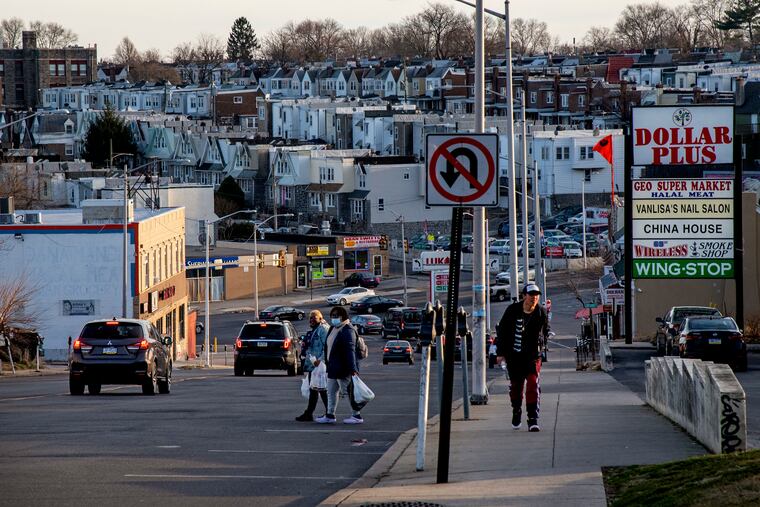The U.S. is in the midst of a housing crisis. What can be done about it?
The homeownership rate for Hispanics is 48% and for Blacks it is 42%. Those levels have not been that low in decades.

The nation is struggling with an affordable-housing crisis. There is not enough housing in communities across the country, including here in Philadelphia. This means families must pay more for their housing, renters have less to get by on at the end of the month, homeownership is out of reach for too many, and those of modest means are forced to live farther from decent jobs.
Homebuilding collapsed during the housing crash more than a decade ago and has been slow to recover. Construction of high-end homes and apartments recovered first, and there is now an oversupply in some urban areas across the country.
However, the construction of affordable housing — homes reasonably priced for lower-income households to rent or own — has only recently begun to increase and continues to lag demand. The shortfall is so large that it would take an extra year of construction at its current pace to close it.
The lion’s share of the undersupply is concentrated in areas that offer significant economic opportunity, driving up house prices and rents for low- and moderate-income families precisely where they want to live.
Prices for homes sold in the bottom fourth of the market are up nearly 8% per annum over the last decade, almost double that for homes in the top fourth. And rents for those families who rent because they cannot afford to own, rather than by choice, have increased nearly 4% per annum over the last decade — a trend that has continued even during the pandemic.
The rising rents leave more and more renters with little to live on. Today, one in four renters pays more than half of monthly income toward rent, leaving barely enough to cover food, clothing and health care, much less save for emergencies or build wealth. The typical renter saves less than $500 a year, not enough to cover run-of-the-mill financial emergencies, let alone save for a down payment on a home.
And the rise in house prices is putting the economic opportunity of homeownership out of reach for more families, particularly those of color. Today, the homeownership rate for Hispanics is 48% and for Blacks it is 42%, a level not seen in decades.
The affordable-housing shortfall is not just depressing savings and increasing the wealth gap. It is also forcing those at the bottom of the economic ladder to live farther away from those at the top and, more important, farther from economic opportunity. Cities are becoming affordable only to the wealthy, while many of those of more modest means are forced into longer commutes, creating more traffic, more environmental strain, and greater social division.
The story is one of demand and profit margins. Low- and moderate-income households were much slower to recover from that recession, hitting their economic stride again only in the year or two before the pandemic. And the prices and margins that builders could get from building affordable housing have been too low to encourage the investment.
The economics of building affordable housing have improved more recently, with the skyrocketing house prices and rents finally creating a wide enough profit margin to justify more investment. But the fact that the economics of building affordable housing are still precarious and appear to require pricing that is not affordable for many homebuyers and renters, especially as mortgage rates rise on the other side of the pandemic, means that the problem remains acute.
Meanwhile, the constraints on building affordable housing, including building materials and labor, lending, and especially land, remain significant.
Addressing the costs and constraints of developing land would have the biggest impact. The sheer number of local impediments here suggests that federal policymakers would do well to take a top-down approach. From zoning that restricts multifamily development or dense single-family development, to prohibitive permitting and developing fees, there are so many decisions made at the local level that can impede the development of affordable housing that federal policymakers should push communities to reorganize their approach to development from the ground up.
President Joe Biden has put forward several policies in his infrastructure plan that would make a difference here. He has proposed competitive local housing innovation grants to state and local governments that make their land-use policies friendly for building affordable housing. The funds would go toward activities that further support the effort: purchasing blighted properties, renovation and conservation, modernizing schools and other public infrastructure, promoting green development, and so forth.
He may have to go further and condition some of the considerable federal aid going to local governments on a commitment to make their communities more hospitable to the construction of affordable housing. One logical funding stream to tie to such commitments would be the community development block grants issued by the Department of Housing and Urban Development. Another candidate is transportation funding.
The president is also proposing tax credits for development of affordable rental units, and funds for state housing finance agencies and nonprofit Community Development Financial Institutions (I’m the lead director of a Philly-based CDFI, Reinvestment Fund) to make affordable-housing investments in communities with inadequate housing.
The affordable-housing shortage is daunting in its scale, its impact, and the range of policy issues it raises. But it is not going to sort itself out, at least not soon. Policymakers must aggressively respond to the challenge, helping to align supply and demand in the market to ensure that housing is no longer a source of increasing financial and social instability for millions of American families but a source of stability.